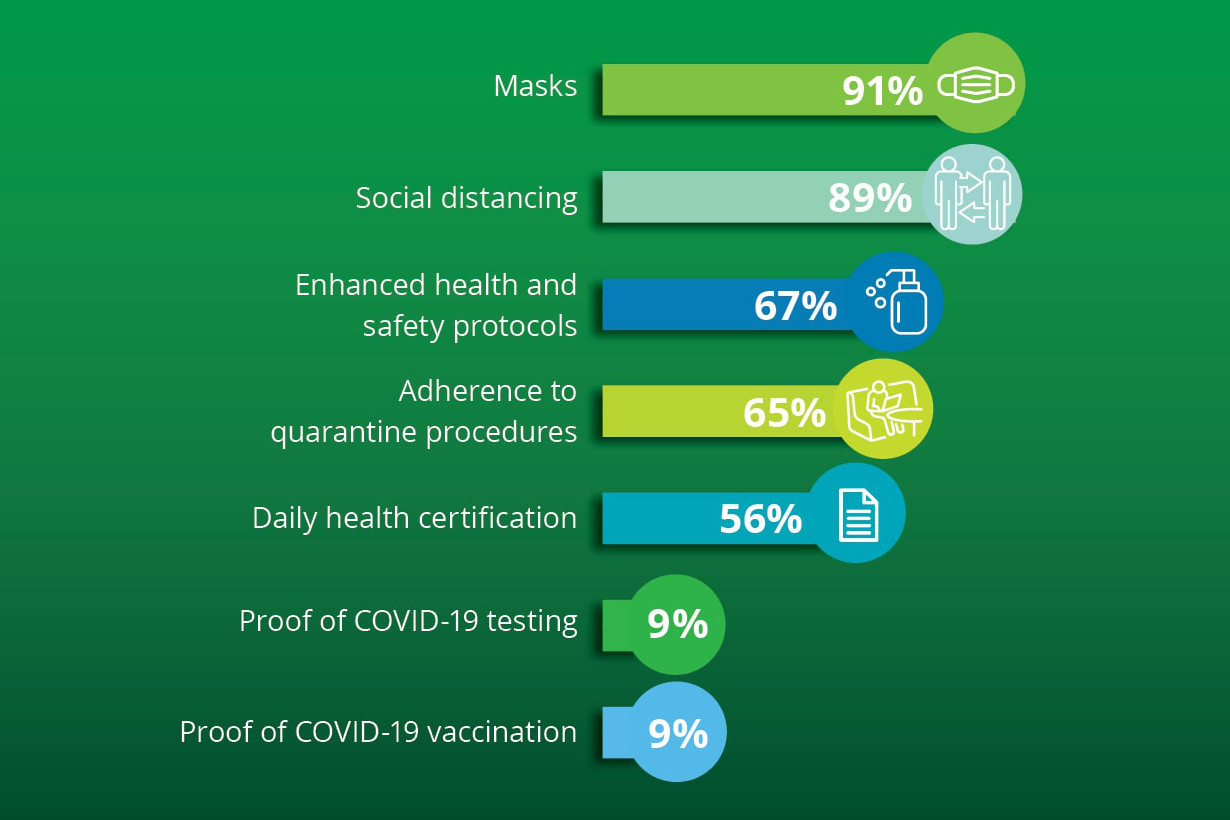Enforcing COVID-19 restrictions at the office
Employees want to return to the office, at least to some degree, and enforcing COVID-19 restrictions can be a challenge. According to a survey made by Eden Workplace, 85% of office workers are looking forward to returning to the office. Over half of these workers report socializing with colleagues as the main driver for wanting to return to the office.
But how can employers make sure that it is safe to return to the office? In this article, we discuss the wants of employees and what employers can do to ensure safety in the workplace by enforcing COVID-19 restrictions.
Employees want employers enforcing COVID-19 restrictions
While the employees are missing colleagues and are willing to go back to the office at least partially or in a hybrid working mode, there are some concerns.
Two-thirds of the respondents will not be comfortable with in-person meetings unless everyone is at least six feet apart. As we now are accustomed to this “six feet society” it will take some time to get used to being close to people, which is completely expected and reasonable.
Another significant finding from the survey was that the workers will not be comfortable at the office unless strong safety measures are enforced, such as using medical-grade PPE or proof of vaccinations.
The respondents also expect a social stigma against those workers who have not been vaccinated.
Learn more: enabling human connection at the office
What can employers do?
The message is quite clear: workers are concerned about their safety. Deloitte surveyed executive level workers within their clients on what they thought about returning to the office.
These are the top safety measures that these executives had thought of:

- Masks (91%)
- Social distancing in the workplace (89%)
- Enhanced health and safety protocols (67%)
- Adherence to quarantine procedures (65%)
- Daily health certification (56%)
- Proof of COVID-19 testing (9%)
- Proof of COVID-19 vaccination (9%)
In addition to this, two thirds will strongly encourage vaccinations to reduce the risks of contracting COVID-19 or to minimize the risk of getting serious symptoms from it.
Can technology help?
Enforcing COVID-19 restrictions is hard and pushing the primary responsibility about this to the employees themselves should be avoided. It is employers’ task to ensure a safe place for working for all employees.
Technology like augmented reality (AR), digital twins and mobile applications have a good use case in enforcing COVID-19 restrictions.
Digital twins for your office can help you visualize people flow and their distances from each other at the office. This helps in enforcing COVID-19 restrictions at the office as you can see where there are too many people and act accordingly.
Mobile applications have use cases for internal communications about the changing safety protocols or in providing certificates on employees’ health status or vaccinations.
In addition, the emergence of wearable assisted reality (AR) applications help to navigate challenges related to travel restrictions and health and safety orders. They help in providing live video conferencing capabilities from the field to remote team members, especially in the more challenging industries.
Conclusion
People want to return to the office to some extent, mainly to interact and collaborate with their colleagues. Employers must ensure that the office these people are returning to is safe.
With the listed safety measures and some help from technology, you can make sure your employees feel and are safe on your premises.
Read about more actions you can take for safe return to work in our guide here:
Return to office – guide
Check out our comprehensive guide
,


